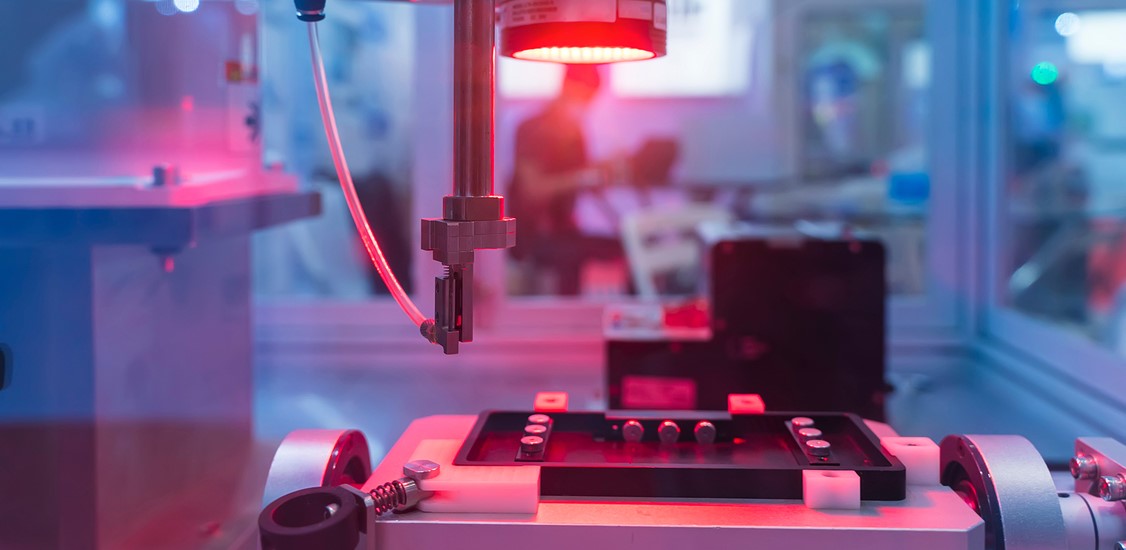IoT has been a key catalyst in driving the ongoing datafication and digitization of society in novel and amazing ways. From self-driving cars to autonomous manufacturing robots, and remote medical devices/equipment that facilitate doctors to diagnose patients and even carry out surgeries, all thanks to these inflating networks of connected things. According to a report by Statista, there will be 75 billion connected devices globally by 2025.
 Image credit: Statista
Image credit: Statista
The undisputed expansion of the Internet of Things is truly a fascinating spectacle unfolding before our very eyes. For one, the rapid adoption of IoT is fueling up the 4th industrial revolution aka Industry 4.0. For another, connected IoT devices are reimagining how humans interact with technologies.
#1: IoT Data Explosion
IoT is creating a gargantuan pool of big data. The data that can assist businesses predict outcomes, offer real-time insights, improve efficiency across operations through predictive analytics on equipment, and much more.
 Image credit: Priceonomics
Image credit: Priceonomics
As the rapid expansion of connected devices and sensors continues, the sheer volume of data that these devices create will skyrocket to mindboggling levels. The problem is finding out ways to analyze and mine the data (big data) these devices will create. It is daunting for humans to analyze this data and doing so with standalone tools and old-school methods is next to impossible.
According to IDC, the data generated by connected IoT devices is expected to grow exponentially reaching a whopping 73.1 ZB (zettabytes) by 2025.
#2: AI & IoT: Made for each other
The only way to improve the accuracy and speed of big data analysis for IoT to live up to its promise is through leveraging Artificial Intelligence (AI) and machine learning. While IoT deals with devices communicating with each other, AI on the other hand would enable these devices to learn, reason and process information like humans, all in a faster, smarter and efficient manner.
When AI meets IoT
IoT is empowered by three key technologies - Artificial Intelligence, Big Data and 5G.
When combined, AI and IoT pave way for a more connected future. The AIoT fusion is fast turning out to be mainstream, since it continues to reimagine the fundamental ways in which we process data and live our lives.
AI and IoT together create AIoT - a smart and connected network of devices that seamlessly communicate over powerful web networks unleashing the power of data faster and better than ever.
The nexus of IoT and AI can reimagine the way economies, businesses and industries function. AIoT creates smarter and intelligent machines that simulate intelligent behavior and supports sound decision-making with little or zero human interference.
Simply put, you can imagine AIoT-enabled devices like extensions to a digital nervous system, lighting up and carrying out functions powered by the system’s brain, i.e. by artificial intelligence.
Most organizations fail to collect as well as process data coming from connected IoT devices because of the excessive data volumes, unreliable or obsolete data acquisition tools, and flawed data analytics tools/practices.

Understanding the Artificial Intelligence of Things (AIoT)
With the inception of edge computing and coming-of-age cloud platforms equipped with unmatched AI capabilities, organizations today get an opportunity to uncover valuable insights into IoT data that would otherwise get lost thus, helping businesses derive more value from their IoT initiatives.

Let’s take a look at 5 major AIoT segments
AI and IoT in action - Here are few use-case scenarios of AIoT.:
1. Wearables
Wearables continuously monitor and track health preferences and habits. Applications include health trackers, smart bands, heart rate monitoring, etc. Wearables track health patterns and transmit real-time updates to caregivers’ based on certain preset rules and algorithms.
For example, the doctor would receive alerts if a particular condition was met i.e. your heart rates reached unsafe levels.
- Smart watches
- Wireless earbuds
- AR/VR goggles
Fujitsu leverages AI on data sourced from its IoT network of connected wearables of its staff to improve work safety.
2. Manufacturing
AIoT in manufacturing uses real-time data insights and sensors to optimize supply chain, production, logistics, etc. Data generated from these connected IoT devices helps manufacturers to foresee challenges and prevent costly errors and injuries.
- Autonomous AI-driven robots
- Automated SCM
- Predictive maintenance sensors
One of the world’s prominent car manufacturers, BMW, has begun using IoT and AI in their manufacturing process. BMW utilizes censored bots to help their workers while manufacturing innovative cars.
3. Retail
AIoT in retail involves various data points spanning from sensors and cameras to observing customers’ buying behavior and movements and predict when they will reach the checkout counter. This would help the staff to reduce checkout time significantly.
For example, a camera system equipped with advance computer vision capabilities can leverage facial recognition technology to identify customers when they walk through the door. The system would then gather data about customers, analyze the same to predict consumer behavior and then uses that intel to make decisions about product placement, marketing etc.
Walmart is a great example here. It has integrated AI and machine learning (ML) with IoT to usher in the future of retail. Walmart uses facial recognition and consumer behavior analysis technology to analyze a customer’s behavior while shopping or waiting in payment queues. These technologies help Walmart to analyze if a customer is getting frustrated or need help and if that’s the case, it could rush store personnel to help shoppers and ensure that situations are always under control.
4. Self-driving cars
Tesla is a perfect example of AI and IoT working in tandem. Tesla’s self-driving cars use AI and machine learning to predict the behavior of pedestrians in various circumstances. Tesla’s cars tend to get smarter with each trip. Self-driving cars powered by AI and IoT can determine optimal speed, road conditions, weather, etc.
5. Smart home
Nest’s smart thermostat is a fine example of AI-powered IoT solution. It learns how your home actually behaves and then adapts to it. You feed it with information manually and by doing this, you teach it to learn. It also gathers accurate data and communicates with the HVAC devices in your home using AI making it responsive and adaptable. It also sends out alerts when there is energy overconsumption and/or when the battery dies.
Further, smartphone integration with Nest can manage and check temperature on the go based on temperature preferences and work schedule for the users.
6. Improved security and threat prevention
Smart devices can self-detect an attack and can proactively prevent or shutdown as needed. Clubbing AI with IoT helps to understand and predict a wide range of cyber risks. This helps to manage employee safety, cyber threats through prompt and automated response.
With AI, cyber threats can be detected at an early stage before they turn ugly and costly. A connected security system can be potentially trained to detect and identify DDoS (dedicated denial of service attack) before it becomes critical.
 Image credit: AIMultiple
Image credit: AIMultiple
With self-learning through AI and machine learning, the system can learn to predict risks under a broad range of scenarios and prioritize those risks helping security personnel to channel their focus on the severe ones.
Improved risk and asset management: The rapid proliferation of IoT opens up the attack surface. AI helps to manage the inflating ocean of devices, navigate security patches and firmware updates, which is beyond the reach of human security personnel.
Automated threat hunting: A prominent service aspect offered by many leading managed cybersecurity service providers. It refers to automated and intelligent threat hunting or scanning, which is a proactive approach. Here, the system does a lot more than simply monitoring the endpoints for known and unknown intrusions. IBM QRadar SIEM is a fine example, which uses Watson AI to offer up-to-the-minute protection from advanced threats including new strands of Ransomware, social engineering hacks and multi-prong attack tactics.
Long story short, AI doesn’t wait for a breach to happen, but works on predicting and identifying a potential breach based on historical data and recommends prescriptive steps to fight the threat.
Takeaway
The AI and IoT nexus is fast becoming a mainstream concept, since it continues to expand the boundaries of data processing and intelligent machine learning for years to come.
By 2025, the projected figure for IoT-connected devices around the world is 75 billion. This makes it natural as these device numbers grow, the volume of data will too. This is where AI comes into action - lending its intelligent learning capabilities to the connectivity of IoT.
AIoT - It’s time to let smart devices point out where the opportunities truly linger.






















